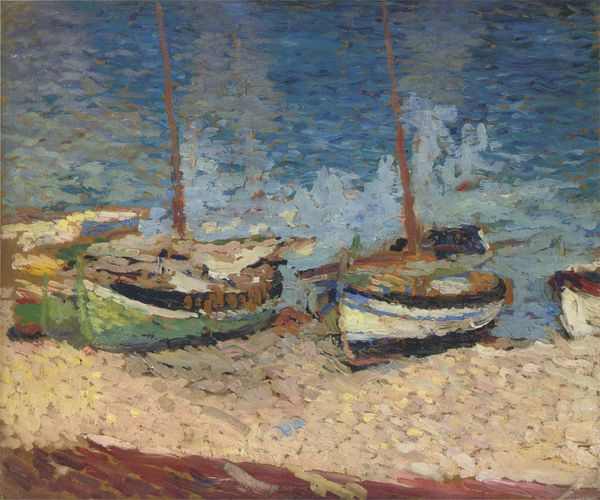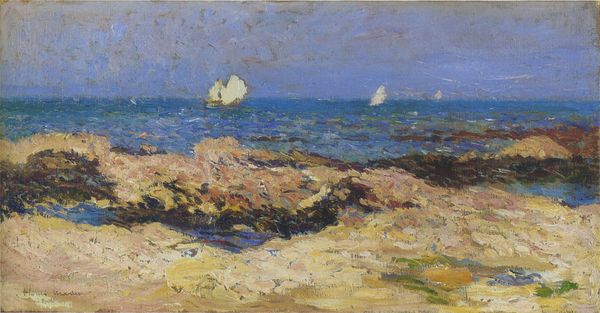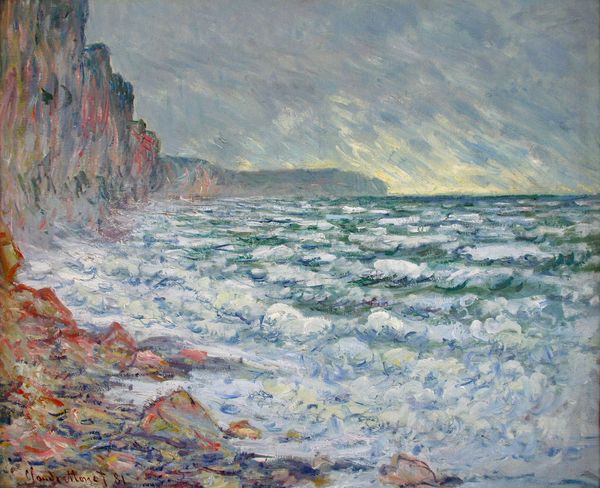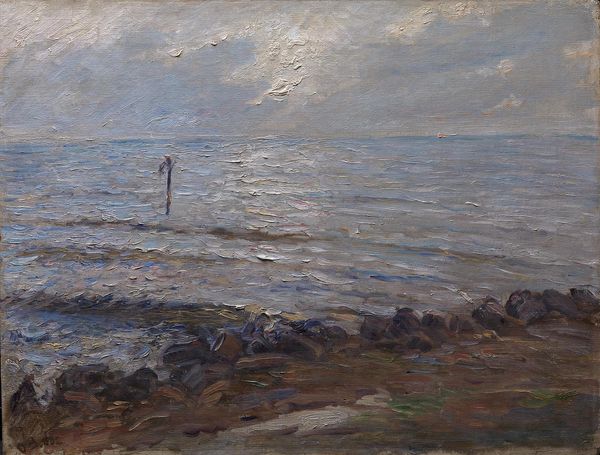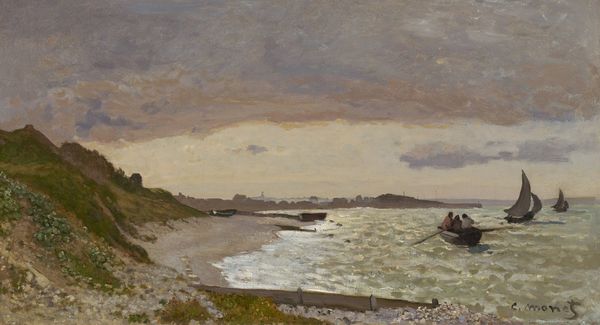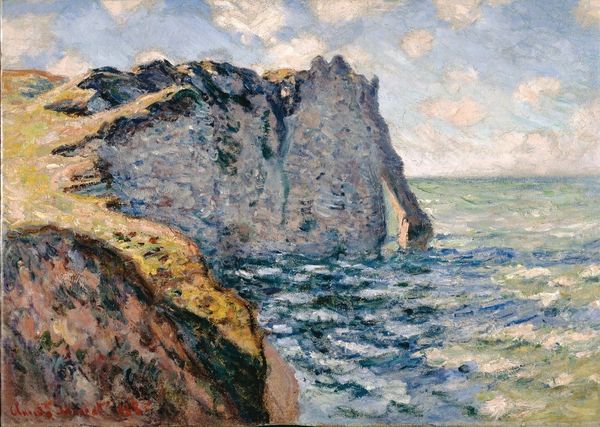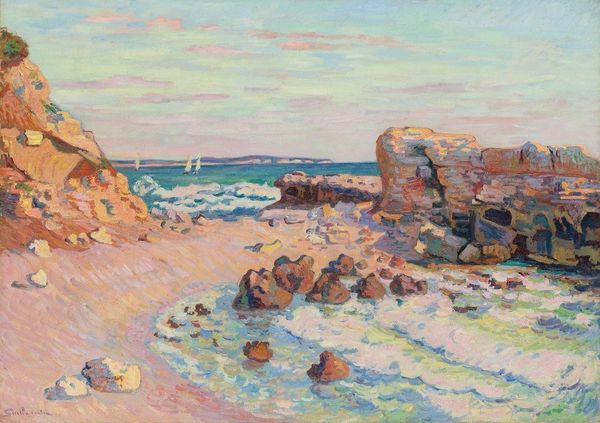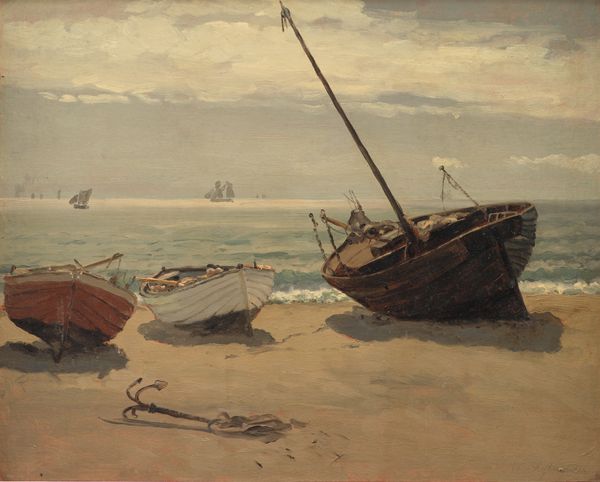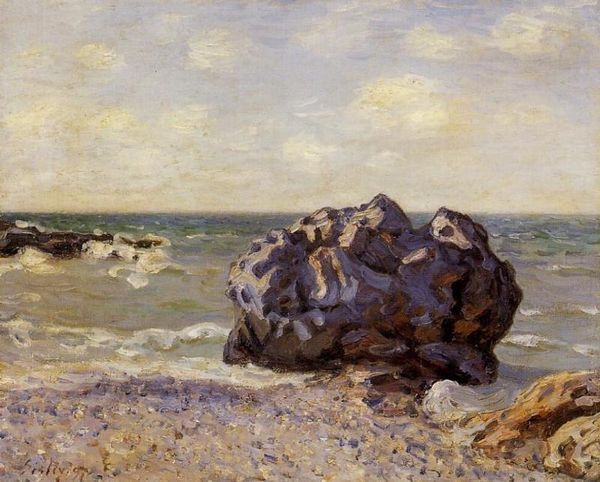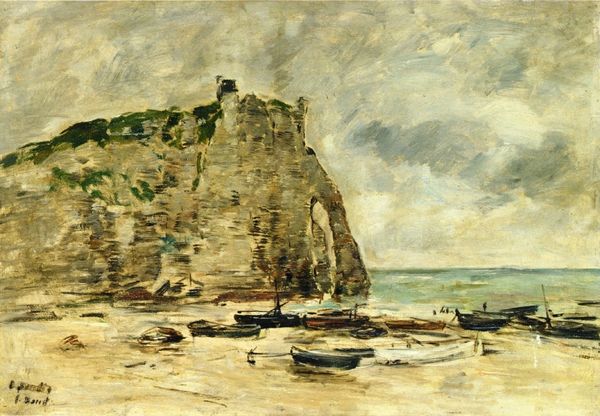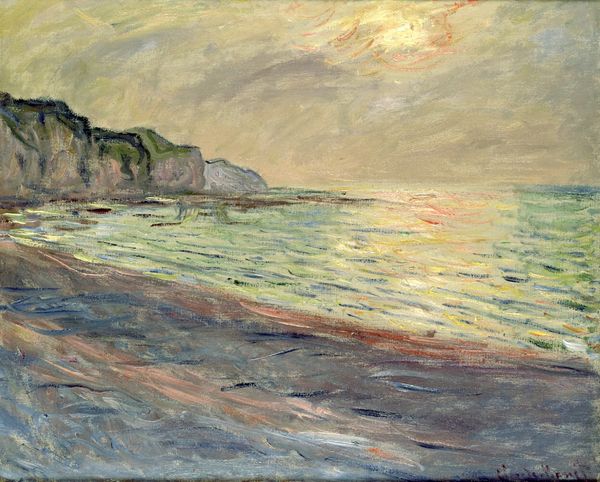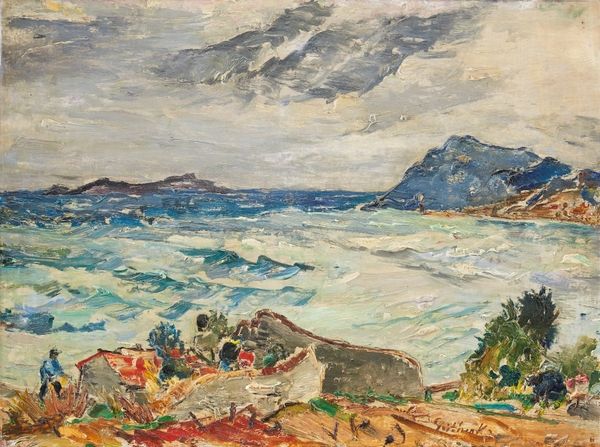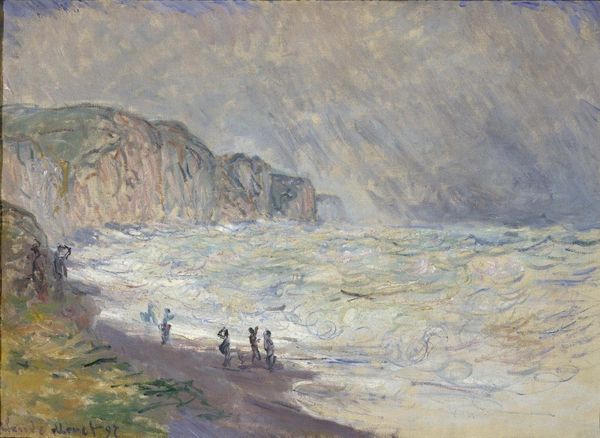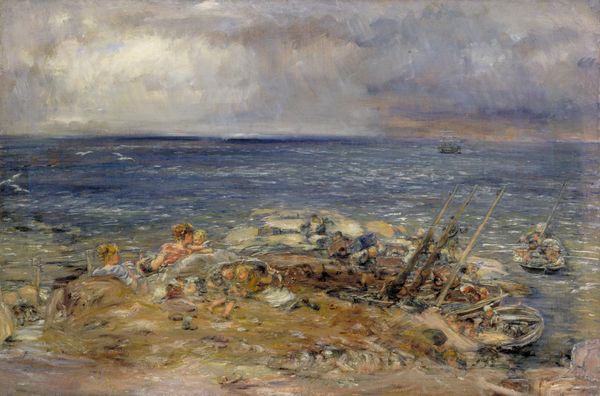
painting, plein-air, oil-paint, impasto
#
boat
#
painting
#
impressionism
#
impressionist painting style
#
plein-air
#
oil-paint
#
landscape
#
impressionist landscape
#
oil painting
#
impasto
#
rock
#
genre-painting
Copyright: Public domain
Editor: Here we have Claude Monet’s "Fishing Boats on the Beach at Etretat" from 1884, painted in oil. I'm struck by the contrast between the solid cliffs and the movement in the waves. What sort of ideas do you have about this one? Curator: Look at how Monet uses the fishing boats – their varying colors, positions, almost like figures in a symbolic drama – to frame our view of the elemental conflict. The churning sea speaks to the primal forces of nature. Do you notice the relative positioning of each form? How might that contribute to our understanding of the scene? Editor: I see what you mean, like the boats in the foreground sort of brace against the chaotic sea and the towering cliffs. It's not just a pretty scene, but something more imposing and grounded. Curator: Precisely! The towering cliff, eroded by time, serves as a silent witness. Etretat itself, a place deeply intertwined with fishing tradition, resonates through every brushstroke. Consider the psychology of space here: do we, the viewers, stand with the land or venture toward the sea? Editor: That’s interesting. I hadn't thought of the symbolic relationship between the cliff, the sea, and us. The way the waves crash almost seems like a battle. Curator: And what of the subdued light? Monet isn't just capturing a fleeting moment. He is invoking an enduring dialogue between humanity and the ocean. Note the brushwork, building forms to evoke textures of water, stone, and timber - each has a story to tell. Editor: I do see the connection between how he depicts the scene and how the textures represent struggle, or even just life itself in this place. Thanks, I have a totally different view of Monet now. Curator: Indeed. Art invites us to read between the lines, unveiling the silent language of form and symbol. Now perhaps you’ll consider Monet beyond just an impressionist.
Comments
No comments
Be the first to comment and join the conversation on the ultimate creative platform.
